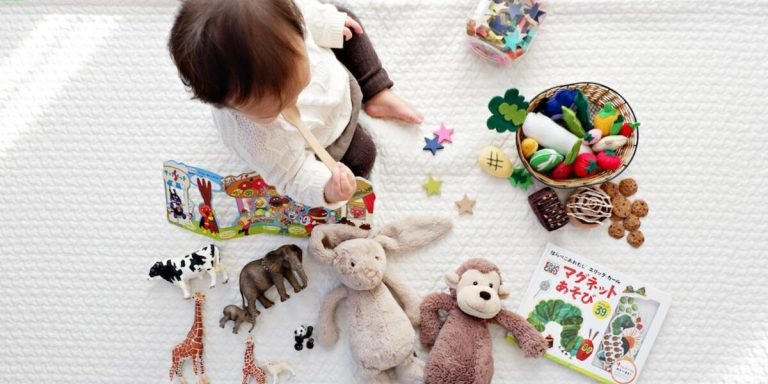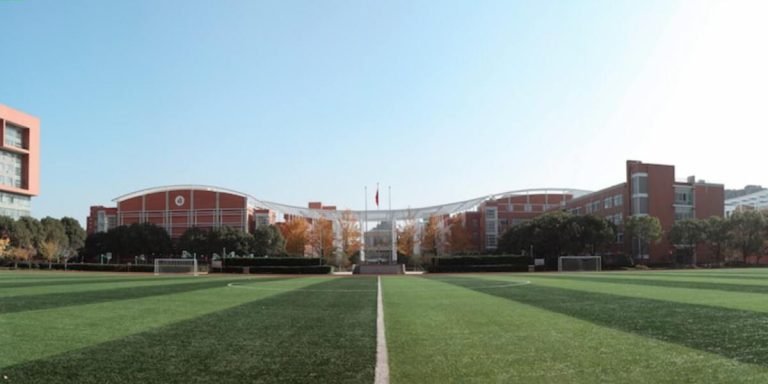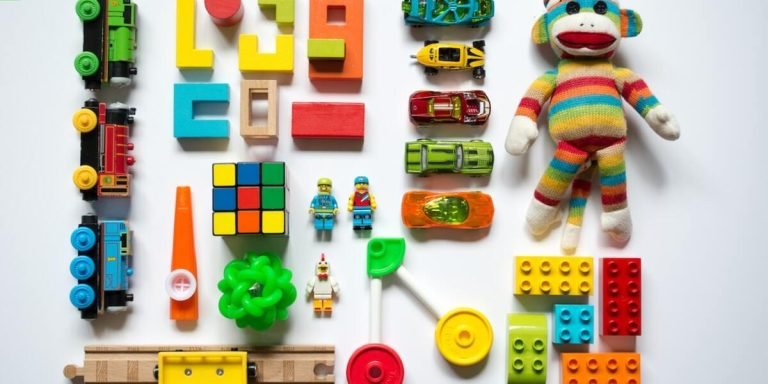What is a Tactile Learner?: Understanding This Unique Learning Method
In the realm of education, understanding your child’s unique learning style is paramount. The question “what is a tactile learner?” often arises as parents and educators strive to adapt methods that best suit individual learning needs. Tactile or kinesthetic learners gain knowledge best by doing or experiencing something physically.
These activity-based experiences significantly awaken their cognitive abilities, making it the most suitable approach for this kind of learner. By delving further into what defines a tactile learner and how they perceive information around them will provide us with crucial insight into creating more efficient teaching strategies suited specifically for these kinetic minds.
Did you know?
Did you know? Studies show that tactile learners make up about 5% of the population, making it one of the least common learning styles. Despite this, these individuals are often innovative problem-solvers due to their hands-on approach.
Understanding Tactile Learning in the Context of Activity-Based Education
Understanding tactile learning in the context of activity-based education is a modern and effective approach to facilitating educational experiences, particularly within technology integration. As we navigate through 2023, it’s critical that parents and educators adopt innovative approaches towards boosting overall comprehension among young learners.
Tactile learning or kinesthetic learning involves using physical activities to grasp concepts better. In this method, children are not mere passive recipients of information but rather active participants who learn by doing things themselves. Incorporating such hands-on practice into subjects that typically rely on theoretical understanding allows students to gain practical insights which enhances their retention and interest levels.
Embracing technology alongside activity-based education has opened new vistas for tactile learners. Now more than ever before, interactive platforms facilitate immersive scenarios where students can explore virtual models of complex ideas – from geometrical shapes in mathematics to human anatomy in biology – at just the touch of a screen! Educators worldwide hail these advancements as they believe teaching techniques tailored for diverse learner types promise an inclusive future for global education.
Characteristics and Preferences of Tactile Learners
Tactile learning, also known as kinesthetic learning, is a teaching method that engages the student’s body in physical activities to understand and process information. For those wondering “what is a tactile learner,” these are individuals who learn best from doing rather than seeing or hearing.
They tend to use their sense of touch and movement for comprehending new concepts. They excel in hands-on tasks such as building models or using physical objects for mathematical problems which significantly contribute to activity-based education strategies.
So now let us explore some key characteristics and preferences of tactile learners:
1. Tactile learners have an affinity towards moving around while studying – it helps them concentrate better.
3. They’re often skilled at assembling parts into whole – something like puzzle solving comes naturally to them.
4. While absorbing information, they might be seen tracing words on paper or doodling unrelated images but surprisingly this aids their memory retention instead of distracting them.
6.Tactile learners display excellent hand-eye coordination skills having precise control over finger movements- making Typing faster & error-free.
Incorporating Kinesthetic Activities into Lesson Plans
Tactile or kinesthetic learners understand the world around them by doing and moving. They tend to have excellent motor memory (remembering things done physically), enjoy hands-on tasks, and learn best when their bodies are in motion.
Integrate technology in education for active learners by focusing on activity-based learning. Adapt your teaching approach as follows:
1. **Interactive Touchscreen Activities:** The advent of interactive whiteboards and touch-screen devices has made this form of engagement easier than ever before with touchscreen games that require physical interaction effectively engaging tactile learners.
2. **Virtual Labs and Simulations:** Physical science experiments aren’t always feasible due to safety concerns or resource limitations; however digital simulations provide an opportunity for students to interact with the virtual environment thus stimulating their sensory inputs.
3. **Educational Video Games:** These games often involve problem-solving situations which demand active participation from players leading not only visual stimulation but also hand-eye coordination exercises.
Strategies for Engaging Tactile Learners Through Hands-On Experiences
In the ever-evolving landscape of childhood education, understanding your child’s unique learning style can be a game-changer. Tactile learners, also known as kinesthetic learners, hold one such distinctive approach to assimilating information. These students thrive on hands-on experiences and physical engagement in the learning process.
Adapting teaching strategies that cater specifically to tactile learners utilizing technology integration continues being instrumental in 2023’s pedagogical sphere. As opposed to traditional chalk-and-board methods which often bore them or seem abstract making it hard for them to grasp theoretical concepts; providing these children with tech-enabled tangible tools help translate abstract ideas into concrete comprehension more easily.
It is here Activity-Based Learning (ABL) steps in as an effective medium of instruction engaging this category of leaners making optimum use of their inherent strength- touch and feel! Teaching elements such as robotics kits or interactive smartboards not only offer touching experience but also encourage active participation from kids stimulating exploration and inquiry-based knowledge growth among tactile learners.
Designing Interactive Workshops for Enhanced Physical Engagement
In an era where digital natives are increasingly found in the classroom, integrating technological tools into education has become essential. One area that offers immense potential for this type of integration is designing interactive workshops geared towards tactile learners.
What is a tactile learner? In short, it’s someone who learns best through physical engagement or hands-on experiences. These individuals thrive when they can manipulate objects to gain understanding and often retain information better with active involvement rather than passive listening or reading alone.
Here’s how technology can be woven seamlessly into these learning activities:
Firstly, consider incorporating virtual reality (VR) technologies. VR provides immersive 3D environments which allow tactile learners to touch and interact with digital items as if they were real objects. For instance, imagine a workshop where students physically build structures using blocks within a VR world – helping them understand principles like balance, symmetry and stability firsthand.
Secondly exploring Augmented Reality (AR). AR overlays digital content onto the user’s real-world views thus expanding opportunities for interaction and exploration of subjects such as geography or anatomy without requiring extensive resources or space.
Another key technology tool worth considering includes robotics kits – small programmable robots that kids program themselves by piecing together different actions in sequence via drag-and-drop coding interfaces on their tablets: A perfect blend of creativity & logic honing fine motor skills while enhancing problem-solving abilities all at once!
Additionally online collaborative platforms make group assignments more engaging enabling rich discussions among peers whilst offering teachers deeper insights about student collaboration patterns helping them tailor instruction accordingly .
Tools and Resources to Facilitate Active Learning Environments
Understanding what a tactile learner is helps us in identifying the appropriate tools and resources that can induce active learning environments for these individuals. Tactile learners, often known as kinesthetic learners, prefer to learn by doing. They thrive on hands-on experiences and activities.
Among the most effective strategies to facilitate activity-based learning is integrating technology into education pursuits of 2023. The advent of EdTech has provided manifold avenues through which educators can create engaging platforms for tactile learners.
To begin with, interactive whiteboards are exceptional tools where students get an opportunity to touch and interact directly with their lessons. This promotes engagement while allowing children to physically connect with information being taught thereby enhancing memory retention.
Secondly, coding toys have surfaced as remarkable educational resource across various ages – from preschoolers right up until teens even adults! Brands like LEGO Boost or Fisher-Price Code-a-Pillar inspire kids not only how coding works but also nurtures problem-solving skills through lots of trial-and-error methods (the core principle behind any formative experience).
Furthermore, Virtual Reality (VR) headsets provide immersive study trips without ever leaving classroom boundaries—an ideal approach for practically oriented students especially when exploring topics such biology or geography concepts more holistically than traditional textbook methodologies afford them.
Assessing the Impact of Activity-Based Learning on Tactile Learner Outcomes
Understanding the learning style of a child is crucial for successful education. Tactile learners, kids who absorb knowledge best through physical activities and hands-on experiences, benefit greatly from activity-based learning approaches. This method engages their intrinsic need to touch, feel, and do as they learn.
Assessing the impact of these teaching techniques on tactile learner outcomes helps parents and educators create more engaging environments in classrooms. Technological integration brings new innovative practices tailored specifically for this group’s needs. In 2023 where digital tools play essential roles across various fields including education sector; it’s only apposite that we make appropriate use of technology to complement traditional pedagogical methods in order to maximize students’ potential.
Measuring Academic Progress in Kinesthetic Students
In recent years, education technology has drastically transformed the way educators approach teaching and students learn. Activity-based learning (ABL), which significantly benefits tactile or kinesthetic learners is one such innovation.
Now, what is a tactile learner? A tactile learner learns best by doing – they understand concepts better when physically involved in the learning process. From molding clay for geography lessons to acting out scenes from literature – these ‘hands-on’ tactics make all the difference for them.
- Understanding the unique needs of kinetic learners.
- Developing engaging activities that facilitate learning.
- Evaluating student progress through activity participation and outcomes.
Educators deploy various interactive activities designed exclusively keeping a kinesthetic student’s need in mind. Monitoring performance during such tasks provides measurable data about a student’s grasp of knowledge and comprehension capabilities. The use of digital platforms enhances this monitoring ability further by providing real-time insights into each child’s level of engagement with an assigned task.
Evaluating Behavioral and Social Development Through Active Methods
Every child learns differently, and understanding this difference is critical for effective education. If you’ve been asking yourself “what is a tactile learner,” it’s essentially a child who benefits most from hands-on experiences during learning processes. This brings us to the importance of activity-based learning in educational settings.
Activity-based learning has been shown time after time to have positive effects on students’ academic performance, especially with tactile learners—those children that must touch or manipulate something physically to understand it fully. When we talk about behavioral and social development in particular, active methods are extremely beneficial.
Firstly, studying change patterns over time as observed through classroom participation levels helps determine if activity based-learning techniques enhance engagement rates among tactile learners – which lead inevitably towards improved cognitive abilities generally speaking throughout their school years ahead.
Conclusion
In wrapping up, understanding “what is a tactile learner” can unlock new paths towards effective childhood learning. It’s not just about embracing their need to touch and experience things physically but also creating an environment where they can thrive by making the most of this unique learning method.
We encourage you to explore our website further for more comprehensive insights into childhood education methods and strategies. We’re here to provide support on your journey as parents or educators, offering valuable resources designed with simplicity in mind. Let’s together make educating children not only efficient but engaging too!







